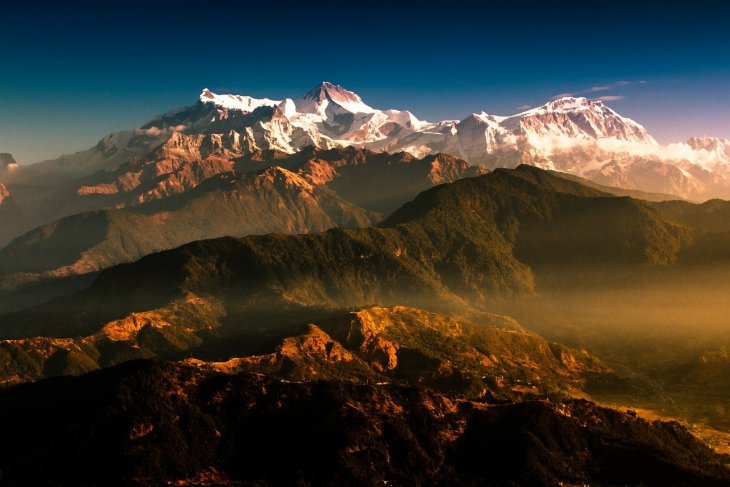Planning a tour to Tibet and Nepal involves meticulous budgeting that accounts for various costs to ensure a smooth and enriching journey. Here’s a detailed breakdown of expenses to consider:

Tour Package:

- Choose a tour package that aligns with your interests and preferences, determining the inclusion of necessary services like transportation, accommodation, meals, guided tours, and permits.
Transportation:

International flights to and from Nepal: Consider airlines, flight routes, and flight durations.
Local transportation: This includes internal flights within Nepal and Tibet, bus or car transfers between cities or attractions, and short-distance taxis or rickshaws.
Accommodation:
Assess various hotel categories, guesthouses, or lodges that fit your budget and preferred level of comfort.
Higher altitude regions may have limited accommodation options, so book early to secure the best choices.
Meals:
Estimate dining expenses based on your dietary preferences and choice of restaurants, considering various cuisines and price ranges.
Factor in typical costs for breakfast, lunch, and dinner, along with snacks and beverages during excursions.
Activities and Attractions:
Research the admission fees for museums, temples, monasteries, national parks, and other attractions in Tibet and Nepal.
Anticipate costs for optional activities like trekking, rafting, or cultural shows, as well as equipment rentals and guides.
Visas and Permits:
Obtain the necessary visas and permits required for both countries.
Consider visa fees, processing times, and any additional documentation needed.
Taxes and Service Charges:
Determine taxes and service charges applicable to various services, including accommodation, dining, and transportation.
Ensure you have sufficient cash for these incidental charges.
Insurance:
- Purchase travel insurance to cover potential medical emergencies, trip interruptions, lost luggage, and other unforeseen situations.
Shopping and Souvenirs:
Allocate a budget for souvenirs, handicrafts, and local products you might want to purchase during your travels.
Research typical prices and bargain accordingly.
Contingency Fund:
- Set aside a contingency fund for unexpected expenses, such as medical attention, flight delays, or changes in itinerary.
Currency and Exchange Rates:
- Familiarize yourself with the local currencies (Nepalese Rupee and Chinese Yuan) and keep track of exchange rates to plan your budget effectively.
Tipping:
- Consider local customs regarding tipping for services such as tour guides, porters, and restaurant staff.
By carefully considering these costs and budgeting accordingly, you can plan a Tibet and Nepal tour that aligns with your financial goals and ensures a memorable and hassle-free experience. Remember to research further, consult reliable travel resources, and stay informed about any changes or updates in costs or requirements.# Counting Costs: Budgeting For A Tibet And Nepal Tour
Executive Summary
A Tibet and Nepal tour offers a once-in-a-lifetime experience, immersing travelers in the breathtaking natural beauty, rich cultural heritage, and ancient traditions of these Himalayan nations. While the rewards are immense, planning a trip to these remote regions can be daunting, particularly when it comes to budgeting. This comprehensive guide provides a detailed breakdown of the various costs associated with a Tibet and Nepal tour, allowing travelers to plan their journey with confidence, ensuring they can fully embrace the wonders that await them without exceeding their budget.
Introduction
Tibet and Nepal, nestled in the heart of the Himalayas, offer a captivating blend of natural splendor, cultural diversity, and spiritual enlightenment. From the towering peaks of Mount Everest to the sacred temples of Kathmandu, embarking on a tour of these captivating destinations is an experience that leaves an unforgettable mark on the soul. However, embarking on a journey to these remote lands requires careful financial planning. This comprehensive guide delves into the various costs associated with a Tibet and Nepal tour, providing travelers with a clear understanding of the monetary aspects involved, empowering them to craft an itinerary that aligns perfectly with their budget.
1. Transportation
Airfare:
- International flights to Kathmandu, the gateway to Nepal, can range from $600 to $1,200, depending on the departure city, airline, and travel dates.
- Domestic flights within Nepal or to Tibet start at $100 and can go up to $300 per leg.
Local Transportation:
- Taxis are widely available and reasonably priced, starting at $0.50 per kilometer.
- Buses are an economical option, with fares ranging from $0.20 to $0.50 per ride.
2. Accommodation
- Budget hotels in Kathmandu and Lhasa start at $20 per night.
- Mid-range hotels offer more amenities and cost between $40 and $70 per night.
- Luxury hotels provide a higher level of comfort and can cost upwards of $100 per night.
3. Food
- Local dishes in Tibet and Nepal are generally inexpensive, with meals costing around $5-10.
- International cuisine is available in major cities but can be more expensive.
- Street food is a delicious and affordable option, with snacks starting at $1.
4. Activities
- Trekking permits for popular trails in Tibet and Nepal range from $50 to $100 per person.
- Guided tours are available for various attractions, with prices starting at $20 per person.
- Entrance fees for temples, museums, and national parks vary from $5 to $20.
5. Visas
- Tourist visas for Tibet are issued by the Chinese embassy and cost around $100.
- Nepal tourist visas can be obtained upon arrival at the airport in Kathmandu and cost $50 for a 30-day visa.
Conclusion
Crafting a budget for a Tibet and Nepal tour requires careful consideration of various factors, including airfare, accommodation, food, activities, and visa requirements. By allocating funds strategically, travelers can create a customized itinerary that caters to their interests and budget constraints. Prioritizing experiences that align with personal preferences, while taking advantage of cost-saving opportunities such as local transportation and street food, will allow travelers to maximize their financial resources and immerse themselves in the wonders of Tibet and Nepal without breaking the bank.
Keyword Phrase Tags:
- Tibet Nepal tour cost
- Nepal Tibet tour budget
- How much does a Tibet Nepal tour cost
- Budgeting for a Tibet and Nepal trip
- Cost of a Tibet and Nepal tour

